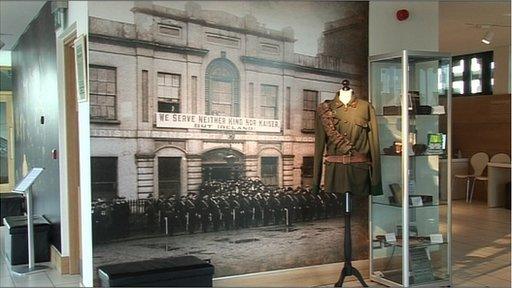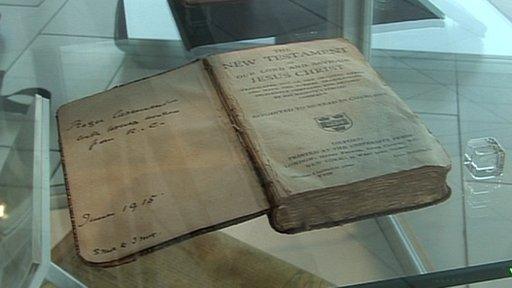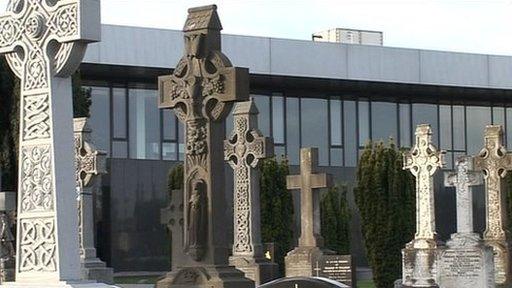Irish exhibition showcases 1916 Easter Rising activists
- Published

The exhibition marks the founding of the two forces that fought the British in the 1916 Easter Rising.
An exhibition has opened in Dublin to mark the founding of the Irish Volunteers and Irish Citizens Army.
It is being shown in Glasnevin Cemetery museum, as part of a decade of centenaries of events that shaped Ireland.
Many of those who gave their lives for the cause of Irish freedom are buried at Glasnevin Cemetery.
The exhibition marks the founding of the two forces that fought the British during the 1916 Easter Rising.

Roger Casement, who grew up in County Antrim, was executed for treason
The loaned items on display were gathered after the museum asked people to bring in things that they were told or believed were of historic importance, to have them valued.
They included uniforms, Irish volunteer membership cards, and a sawn-off shot gun that would have been carried around Dublin hidden under skirts by members of the women's organisation, Cumann na mBan, (League of Women).
The gun, which was imported from Germany during the 1914 Howth gun-running, was found in a house owned by playwright Seán O'Casey.
It is not clear if the gun belonged to him.
There has also been a lot of interest in an item once owned by Roger Casement, who grew up in County Antrim. He is buried at Glasnevin.

A signed bible once owned by Roger Casement is the among the items on display
The British diplomat-turned Irish rebel was executed for treason after landing off the coast of Kerry from a German U-boat in 1916.
Casement had gone to Germany in an attempt to get guns for the Irish rebellion.
His signed bible, which few knew existed, and was only recently confirmed as his, is also on display.
The bible was bought in a book auction by a man, who discovered it at the bottom of a box of religious tracts.
Shane MacThomáis, the historian at Glasnevin Cemetery, said it was less than clear how it got back to Ireland.
"It was either on Casement when he landed form the German U-boat in 1916 or he left it in Germany and somebody sent it over afterwards", he said.

Glasnevin cemetery is the final resting place for many people who fought for Irish freedom
"But it would have been after World War One by the time they sent it back. So, it's a great mystery as to how it got back to Ireland.
"But It's a unique piece of history; a bible signed by Roger Casement in one of the most pivotal years of his career."
The exhibition will run until Easter.
Later this year, there will also be centenary exhibitions on the Howth gun-running and the start of the First World War.
Many soldiers who fought in that war are buried in Glasnevin.
- Published25 November 2013